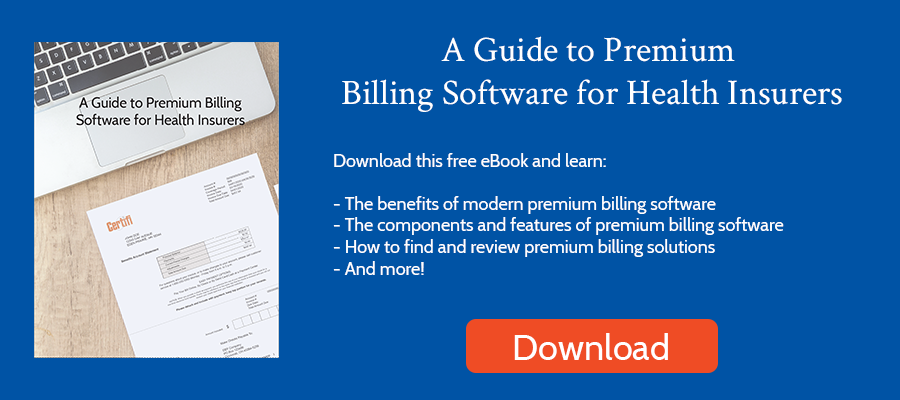Pacemakers, implantable medical devices that regulate the heartbeat, must undergo a rigorous quality control process to ensure safety, effectiveness, and reliability. From pre-production material testing to post-production stability testing, every step of the production process includes numerous quality control tests. Throw in regulatory requirements, and it’s no surprise that pacemakers fail at a very low rate.
Health plan billing errors don’t have the life-and-death complications of a pacemaker failure, but they can alienate members and customers, leading to brand degradation and revenue loss.
Like pacemakers, there are several steps health plans can take that lead to accurate health plan billing:
Validating Demographic and Coverage Data
Demographic information and coverage data help drive premium bills. Incorrect information – like erroneous start dates or dated plan information – can lead to inaccurate bills. Simple validation – like validating that all start dates are within a reasonable timeframe or that all plan codes are for active plans – can find inaccurate data that can lead to invoice errors.
Automating these validations is the key to improving billing accuracy – while limiting manual work and rework. Premium billing software like Certifi can help validate your demographic and coverage data to increase billing accuracy.
Transaction Validation
When generating billing transactions it’s vital to ensure that all active coverage records generate billing transactions as expected. If they do not, Certifi evaluates the coverage data and the billing rates/rules to identify what changes to make to the rules or the configuration data. These quality control checks help improve billing accuracy.
Invoice Variance Checks
Another way to discover potentially inaccurate invoices is to compare current period invoices to past invoices. For example, if this month’s invoice shows a $750 bill and last month’s was $250, it may need a manual review to determine if $750 is accurate.
Using our software, health plans can set variance thresholds to identify invoices that may require a manual review to ensure accuracy. You can’t review every invoice, but if you can recognize and review exceptions, you’ll likely improve billing accuracy while limiting manual work.
Automate Retroactive Adjustments
We recently wrote about how our accounting architecture helps improve billing processes. Nowhere is that more apparent than when processing retroactive adjustments.
Retroactive adjustments can occur for many reasons, but in many cases, they’re due to poor data. For example, a new enrollment may be processed late or with the wrong start date. The health plan will bill the member or group incorrectly and must make a retroactive adjustment to add a credit or debit.
Because Certifi adheres to accounting principles, that adjustment can be automatically applied. Clients send us timelined data, our system sees that modified start date and it automatically makes the appropriate adjustments.
Even better, because of that accounting architecture, health plans can automate downstream adjustments. For example, you may have paid broker or agent commissions based on that premium. Our system can automatically make those downstream adjustments for your next remittance. These automated adjustments save time while improving billing accuracy by reducing human error.
Locking Invoices
Errors can occur if health plans distribute invoices and modify data in their billing software. If you’re using a traditional billing system, that can cause headaches and rework to correct those adjustments.
Instead, use software like Certifi that includes a process that locks invoices after distribution. Locking invoices before delivery ensures staff don’t make more changes for that billing cycle.
Locking invoices makes them available on our payment portal and allows them to be sent to fulfillment to print. In most billing cycles, a handful of invoices may have issues that health plans should correct before they are locked. A report identifies the unlocked invoices to review. Any modifications made afterward can appear as an adjustment to the next invoice.
The locking process improves data quality by preventing clients from accidentally modifying an invoice after you send it.
Conclusion
Just as the stringent quality control process ensures the reliability of pacemakers, health plans must prioritize accuracy in billing processes to avoid customer dissatisfaction and financial setbacks. Employing strategies such as demographic data validation, transaction validation, invoice variance checks, and automated retroactive adjustments can lead to accurate health plan billing. Utilizing advanced billing software like Certifi, with features like invoice locking, not only streamlines the process but also prevents accidental modifications, ensuring improved data quality and customer satisfaction.
Certifi’s health insurance premium billing and payment solutions help healthcare payers improve billing accuracy while reducing administrative costs.



